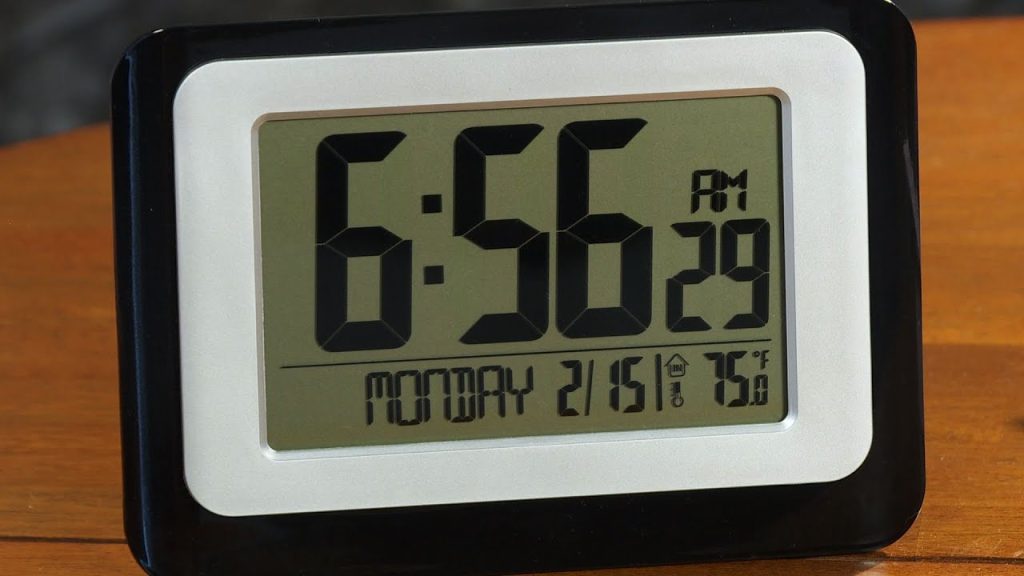Want to make your lacrosse goal louder? You’re in the right place.
Enhancing the sound of a lacrosse goal can elevate the excitement of every score. Lacrosse is a game of speed, skill, and strategy. Hearing the satisfying “thunk” when the ball hits the net can amplify the thrill. A louder goal not only boosts the players’ spirits but also energizes the audience.
Whether you’re a coach, player, or fan, understanding how to make a lacrosse goal louder can make a big difference in the game. In this guide, we’ll explore practical tips to enhance the sound of your lacrosse goal. Let’s dive in and make that goal roar!
Introduction To Lacrosse Goal Noise
Lacrosse is a dynamic sport loved by many. One aspect that excites players and fans alike is the sound a goal makes. The noise of a lacrosse goal can add to the thrill of the game. It energizes players, motivates the team, and engages the audience.
Importance Of Goal Noise
Goal noise is more than just a sound. It signifies success and achievement. A loud goal noise boosts team morale. It can intimidate opponents. The noise also creates an exciting atmosphere for spectators. The louder the noise, the more thrilling the game feels.
Common Issues With Quiet Goals
Sometimes, lacrosse goals do not produce enough noise. This can be disappointing for players and fans. A quiet goal might not give the same sense of accomplishment. It can also make the game feel less exciting. Common issues include the quality of the net and the tension in the strings. These factors can affect the noise level of a goal.

Credit: gogriffons.com
Choosing The Right Materials
Choosing the right materials for your lacrosse goal can make a big difference. The materials can affect the durability and sound of your lacrosse goal. Let’s explore the best materials for a louder lacrosse goal.
Types Of Nets
Different nets produce different sounds. Here are some common types:
- Nylon Nets: These are popular and produce a sharp sound. They are durable and can withstand strong shots.
- Polyester Nets: These nets are lightweight and produce a moderate sound. They are less durable than nylon but still effective.
- Metal Mesh Nets: These nets produce the loudest sound. They are very durable but can be heavy and more expensive.
Durability And Sound
The durability and sound of the net are key factors. A more durable net will last longer and maintain its sound quality. Here is a comparison:
| Material | Durability | Sound Quality |
|---|---|---|
| Nylon | High | Sharp |
| Polyester | Medium | Moderate |
| Metal Mesh | Very High | Loud |
Choosing a net with high durability and good sound quality can enhance your game. Consider your needs and budget when selecting the right material for your lacrosse goal.
Proper Net Tension
Proper net tension plays a significant role in the sound of a lacrosse goal. An optimally tensioned net can make the game more exciting. It enhances the sound made during a goal. This adds to the thrill of the game.
Adjusting Net Tightness
Adjusting the tightness of your lacrosse net is crucial. A well-tightened net provides a louder, crisper sound. Use zip ties or lacing cords to secure the net tightly. Make sure the net is evenly tensioned. This prevents any areas from being too loose or too tight.
Impact On Sound
The sound of the ball hitting the net is essential. Proper tension creates a louder, more satisfying noise. This sound can boost players’ morale and excitement. It also signals a clear, successful goal to the audience. The impact on sound is immediate and noticeable.

Credit: www.insidelacrosse.com
Ball Type And Condition
The type and condition of the ball can impact the sound of a lacrosse goal. Using the right ball and keeping it in good shape can make a big difference.
Ball Material
The material of the lacrosse ball plays a key role in the sound it makes. Lacrosse balls are typically made of rubber. This material is durable and provides a consistent bounce.
There are also practice balls made of softer materials. These balls may not produce the same sound as standard rubber balls. Using official game balls can help achieve a louder goal sound.
Ball Maintenance Tips
Maintaining your lacrosse balls is important for performance and sound. Here are some tips:
- Clean your balls regularly. Dirt and debris can affect the bounce and sound.
- Store balls in a cool, dry place. Heat can cause rubber to soften and lose its shape.
- Inspect balls for cracks or damage. Replace any balls that are worn out.
- Avoid using balls on rough surfaces. This can wear them out faster.
By choosing the right ball and keeping it in good condition, you can ensure a louder, more satisfying goal sound.
Frame Construction
Creating a louder lacrosse goal involves understanding the frame construction. The frame plays a critical role in the sound produced when the ball hits the net. Let’s break down the key aspects of frame construction that affect the acoustics.
Material Choice
The material of the frame greatly impacts the sound quality. Common materials include:
- Metal – Typically louder due to its rigidity and density.
- Plastic – Generally quieter, absorbs more impact.
- Wood – Offers a balanced sound, though less common in modern goals.
Metal frames, such as aluminum or steel, are preferred for louder goals. Their dense structure does not absorb much sound, allowing for a sharper noise.
Impact On Acoustic Properties
The acoustic properties of the frame also depend on its design. Consider the following factors:
- Thickness – Thicker frames absorb more sound, making them quieter.
- Shape – Rounded frames may diffuse sound, while flat frames enhance it.
- Connections – Welded joints can produce a more resonant sound than bolted ones.
A table can also help compare these properties:
| Material | Sound Quality | Durability |
|---|---|---|
| Metal | Loud | High |
| Plastic | Quiet | Medium |
| Wood | Balanced | Low |
Choosing the right combination of material and design can significantly enhance your lacrosse goal’s loudness.
Positioning And Setup
Setting up your lacrosse goal correctly can enhance its sound. Proper placement and setup can help you hear the ball hit the net more clearly. Below are some tips on optimal placement and environmental factors to consider.
Optimal Placement
The position of your lacrosse goal can affect its volume. Place the goal on a flat, hard surface. A concrete or asphalt surface works best. These surfaces reflect sound better than grass or dirt.
If you must use grass, keep it short. Tall grass absorbs sound, making the goal quieter. Ensure the goal is stable and secure. A wobbly goal can muffle the sound of the ball hitting the net.
Here are some tips for optimal placement:
- Choose a flat, hard surface.
- Keep grass short if using a grassy area.
- Ensure the goal is stable and secure.
Environmental Factors
Environmental factors also play a role in the sound of your lacrosse goal. Wind direction and speed can affect how sound travels. Try to position the goal with the wind blowing towards you. This helps carry the sound of the ball hitting the net.
Surrounding objects can impact sound as well. Place the goal away from walls, fences, or trees. These objects can block sound waves, making the goal quieter. An open area is ideal for the loudest sound.
Consider these environmental factors:
- Wind direction and speed.
- Avoid placing the goal near walls, fences, or trees.
- Choose an open area for better sound.
Maintenance Practices
Maintaining your lacrosse goal can significantly improve its performance and durability. Regular attention to minor details can make a big difference. Let’s explore essential maintenance practices.
Regular Inspections
Perform regular inspections to ensure your lacrosse goal stays in top condition. Check for any visible signs of damage or wear. Look at the netting, frame, and connectors. A quick visual check can prevent bigger issues later.
| Component | Inspection Frequency | Key Points to Check |
|---|---|---|
| Netting | Weekly | Holes, fraying, loose knots |
| Frame | Monthly | Rust, bends, cracks |
| Connectors | Monthly | Loose screws, broken parts |
Repairing Wear And Tear
Address any wear and tear promptly to maintain the goal’s integrity. Small repairs can prevent larger problems. Use these steps:
- Identify the issue. Look closely at damaged areas.
- Gather the necessary tools. Basic tools like pliers, scissors, and a wrench are often needed.
- Fix the problem. Replace broken parts or mend holes.
- Test the repairs. Ensure everything is secure and functional.
For netting repairs, use strong twine to mend holes. For frame issues, tighten loose screws or replace damaged sections. Regular maintenance keeps your lacrosse goal loud and ready for play.
Advanced Techniques
Advanced techniques can significantly enhance the sound of your lacrosse goal. These methods go beyond basic adjustments. They involve using special accessories and custom modifications. Let’s dive into these advanced techniques.
Sound Enhancing Accessories
Sound enhancing accessories can amplify your goal’s noise. Start with net tensioners. They keep the net tight, creating a sharper sound. Another accessory is the sound reflector. It directs the noise towards the audience. Attach it to the back of the goal. This makes the sound more focused and louder.
Consider using noise-enhancing mesh. This type of netting is designed to amplify sound. It’s a popular choice among players. These accessories are easy to install. They make a noticeable difference in sound levels.
Custom Modifications
Custom modifications offer a more personalized approach. One option is adjusting the frame. A tighter frame increases the net’s tension. This creates a louder sound. You can also add padding to certain areas. This reduces unwanted vibrations. It makes the main sound clearer and louder.
Another modification is changing the net material. Some materials produce a louder sound upon impact. Experiment with different types to find the best one. Custom modifications require some effort. But they can greatly improve the sound of your lacrosse goal.

Credit: www.harlemlacrosse.org
Frequently Asked Questions
How Can I Make My Lacrosse Goal Louder?
You can make your lacrosse goal louder by using tighter netting, adding noise-enhancing materials, or attaching sound amplifiers.
What Materials Amplify Lacrosse Goal Noise?
Materials like metal pipes, hard plastics, or specialized sound amplifiers can help amplify lacrosse goal noise effectively.
Does Tighter Netting Make A Goal Louder?
Yes, tighter netting creates more tension, which can make the impact of the ball louder when it hits the goal.
Are Sound Amplifiers Effective For Lacrosse Goals?
Yes, attaching sound amplifiers to your lacrosse goal can significantly increase the noise produced upon impact.
Conclusion
Enhancing the sound of your lacrosse goal can boost game excitement. Simple tweaks, like using a different net material, can make a big difference. Adjusting the goal’s position can also help. Try these tips and notice the change. Your games will feel more thrilling.
Implement these steps and enjoy a louder, more engaging lacrosse experience. Happy playing!


